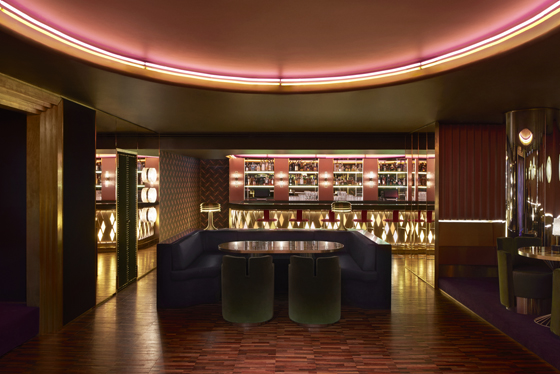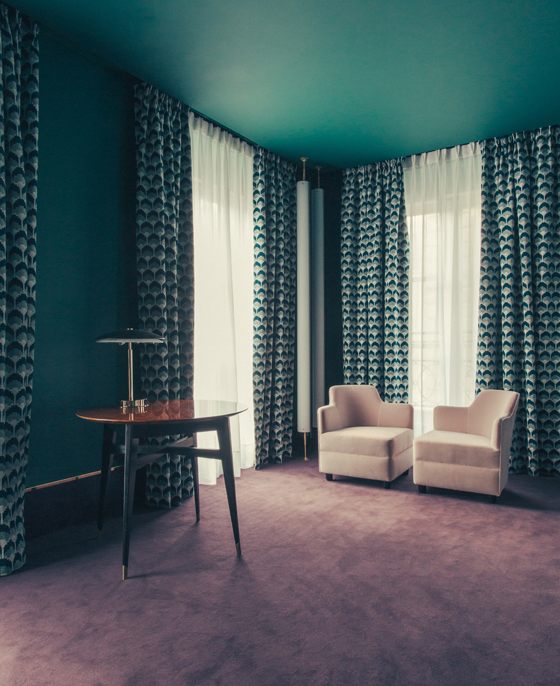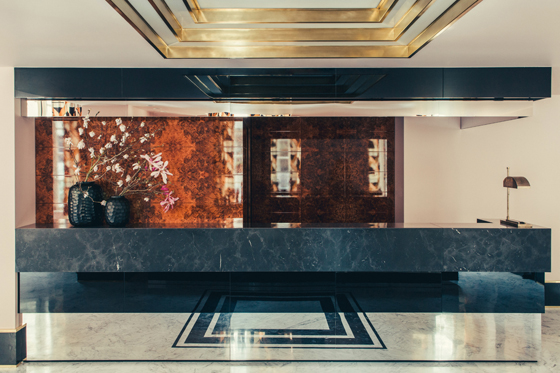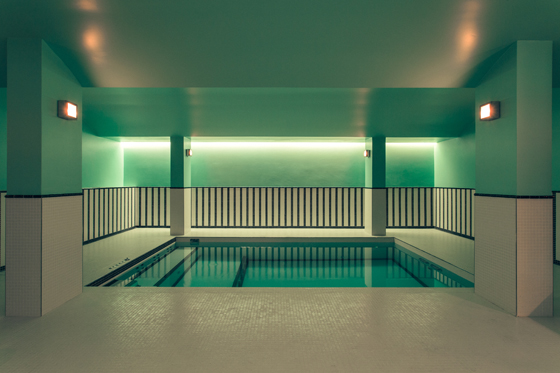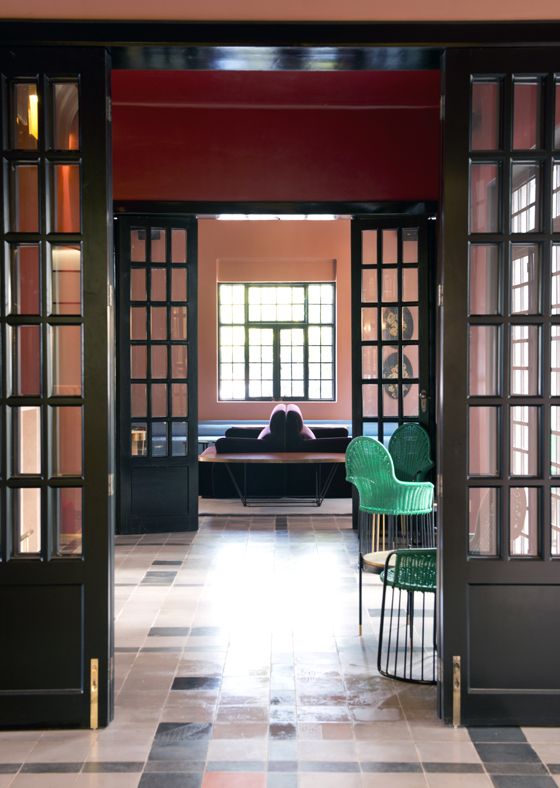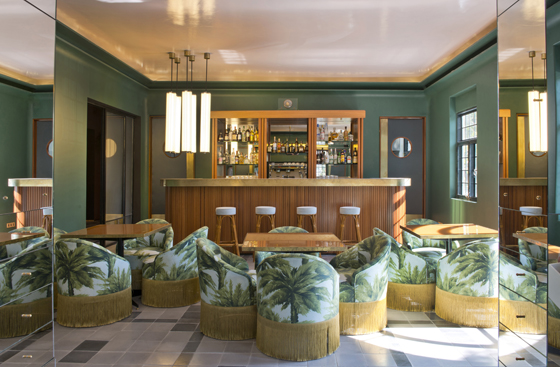Future times past: DIMORESTUDIO
Texte par Madeline Bouton
Berlin, Allemagne
11.12.17
Following their creation of the new restaurant at private-members institution The Arts Club in London, Britt Moran and Emiliano Salci of go-to Milan-based office DIMORESTUDIO elaborate on their portfolio of historically and materially saturated interiors.
Britt Moran (left) and Emiliano Salci make up the creative duo behind the of-the-moment design office DIMORESTUDIO, based in Milan. Photo: Stefano Galuzzi

Britt Moran (left) and Emiliano Salci make up the creative duo behind the of-the-moment design office DIMORESTUDIO, based in Milan. Photo: Stefano Galuzzi
×Through a deft layering of colour, texture and history, Britt Moran and Emiliano Salci of DIMORESTUDIO weave a sense of timelessness and narrative into their interiors. Architonic caught up with increasingly sought-after creative duo to talk hospitality.
You've recently delivered a number of striking and original hotel and restaurant projects. Was this a conscious decision – to develop this type of work in your portfolio?
We try to infuse every environment with a unique flavour through unusual and unexpected colours, different materials, and mixing past with present, tradition with contemporaneity.
Based on the location, the time of a building, we create a story and feel for the space. Then we research our story and add layers from there. This appeals to our clients and has led us to working on commercial and residential projects.
Leo’s at the Arts Club in London is DIMORESTUDIO’s latest project in which “elegance and contrasts are the key characteristics of the concept”, also inspired by the Hong Kong film In the Mood for Love (2000) by Wong Kar-wai. Photos: Paola Pansini
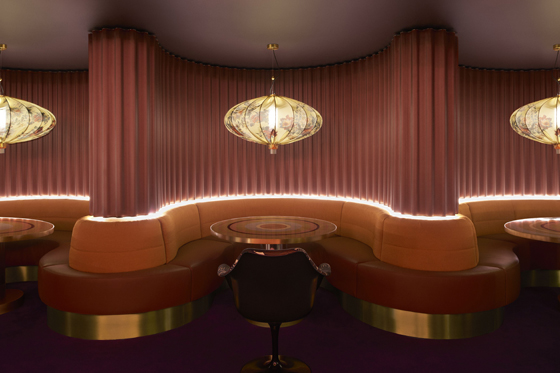
Leo’s at the Arts Club in London is DIMORESTUDIO’s latest project in which “elegance and contrasts are the key characteristics of the concept”, also inspired by the Hong Kong film In the Mood for Love (2000) by Wong Kar-wai. Photos: Paola Pansini
×Was a more minimal approach never your thing?
DIMORESTUDIO’s trademark style is constantly moving between design, art, architecture and fashion. Within this widely recognised vision, different materials and different periods can coexist; it’s about creating an active dialogue between eras, while shaping a distinct atmosphere for every project. The definition of minimal doesn’t apply to this kind of layering and juxtaposition.
The Hôtel Saint-Marc in Paris exemplifies the studio’s idiosyncratic approach. “Based on the location, the time of a building, we create a story and feel for the space,” explain Salci and Moran. Photos: Philippe Servent
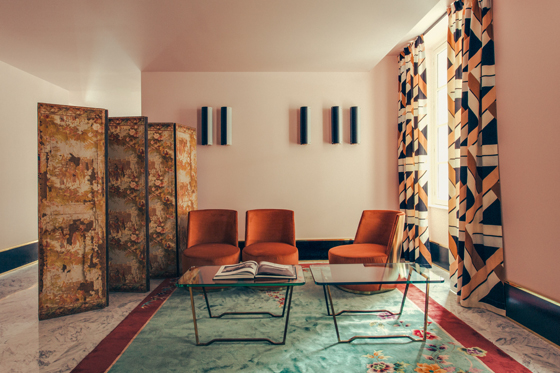
The Hôtel Saint-Marc in Paris exemplifies the studio’s idiosyncratic approach. “Based on the location, the time of a building, we create a story and feel for the space,” explain Salci and Moran. Photos: Philippe Servent
×Some might say that there's a cinematic quality to your projects. Does film or photography inform your interiors?
We have many sources of inspiration – including the street, the art world, travels, cinema and fashion. The 1930s, 40s, 50s, 60s and 70s…
Where's your favourite place to eat?
Indochine in New York. For the atmosphere, the décor, the timelessness and the cuisine.
Casa Fayette in Guadalajara expresses Moran and Salci’s ability to blend texture, history and colour. In this case, the pair quotes the 1940s and 1930s, while incorporating a bright, tropicalia-inspired colour palette. Photos: Adam Wiseman

Casa Fayette in Guadalajara expresses Moran and Salci’s ability to blend texture, history and colour. In this case, the pair quotes the 1940s and 1930s, while incorporating a bright, tropicalia-inspired colour palette. Photos: Adam Wiseman
ש Architonic



